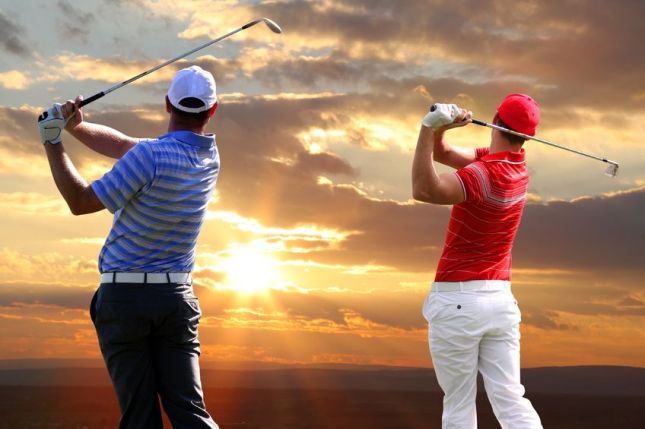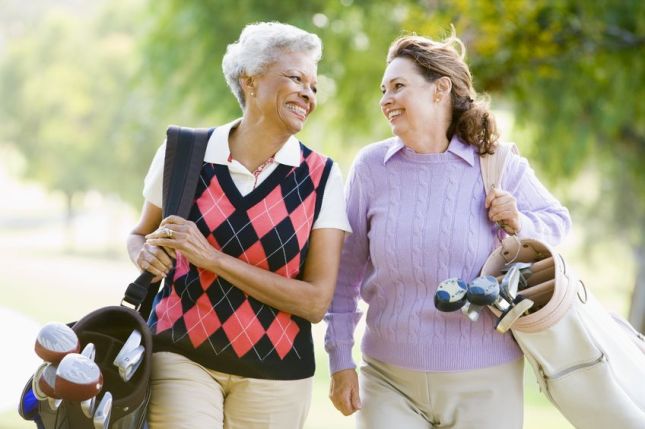We treat many golfers at Cedar Hall Clinics for various conditions, but lower back pain (lumbar spine region) is one of the most common ailments and can be a problem for golfers of all ages. Various studies have estimated that roughly a third of all golfers will struggle with lower back pain at some point in their lives.

What causes this pain?
Each individual case is different and the cause of the lower back pain can vary but in our experience a lack of mobility in the ankles, hips, middle back (thoracic spine) and shoulders forces the lower back to work excessively hard. This puts a lot of pressure on the sacroiliac joint (SIJ) – the spot where the spine connects with the pelvis – as many golfers will rely on their lower back to generate the turn and power in their swings. This is particularly true for golfers with weak glute and hip muscles and those that have a poor range of motion in their mid-back region.
Another issue is that golf is a one-sided sport and golfers tend to put more stress on one side of the pelvis than the other. Most golfers also aren’t very good at stretching and warming up prior to teeing off and this can be a significant contributor to back pain after their round.
So what can be done?
- Warm up properly
Going straight to the first tee from your car or the clubhouse without doing a warm up is one of the surest ways of ending up with lower back pain. Give yourself an extra 15 minutes and start your warm up with some simple stretches on the following areas; - Shoulder & Torso: Hold a golf club with both hands across the shoulders and gently rotate the torso on both sides
- Hips: In a seating position, pull one knee to the chest and repeat on the other side
- Hamstrings: Starting in a standing position, bend over and try to touch the toes. Having flexibility in your hamstrings is essential if you want to avoid back pain as it will allow more movement in the pelvis and help reduce the stress on the lower back.
Practice smooth swings with good rhythm
With a proper swing you should be using the shoulders, chest, pelvis (hip) and lower back muscles to share the load of the swing. Practicing smooth rhythmic swings helps to develop muscle memory and prepares the muscle groups for the torque (force) and torsion (twisting) that a golf swing produces. Begin with the smaller irons and progress up to the larger woods, as this process will allow the muscles to warm up incrementally.

Use a trolley to carry the golf bag
Golf bags can be heavy and very often you will see golfers carrying them with just one strap on the shoulder. This will create too much pressure on one side of the pelvis. We would always recommend using a golf trolley or buggy, but if you want to carry your bag make sure to use the dual straps to evenly split the weight across the back. This will reduce the chances of developing low back pain from an uneven load.
How osteopathy can help
If none of the above tips are making any difference to your pain it may be time to see an osteopath, who are specialists in relieving the pain associated with golfing injuries. Very often the treatment will involve not just treating the area of pain but also focusing on the associated muscles, nerves, tendons and ligaments to ensure that they are all functioning optimally. This will help reduce the chances of the same injury recurring while also enhancing the body’s resilience to future injuries.
If you have any concerns over an injury you have picked up playing golf or one that is affecting your game please feel free to give us a call. Or make an appointment for a free assessment to find out what’s going on. We’re always happy to give advice or address any concerns you may have.
Until next time – happy golfing.

